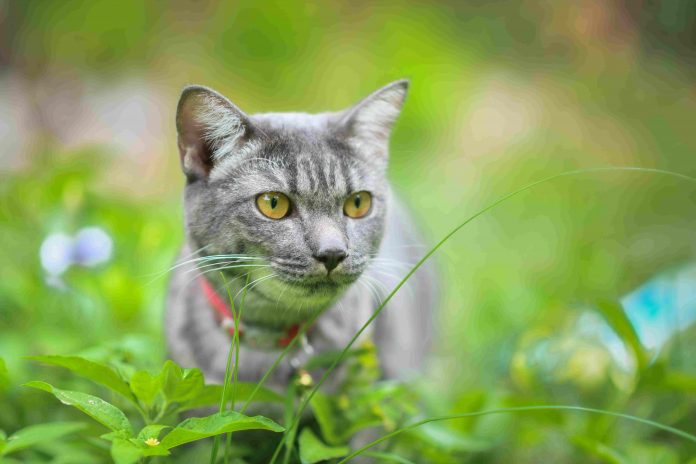A Sunshine Coast woman has joined experts in urging pet owners to be wary of paralysis ticks, after her cat spent seven days in intensive care.
Chris Perrard’s cat, Elise, was bitten and its effect was devastating.
Elise loves exploring the pond and rainforest near their house – ideal environments for paralysis ticks.
When Chris’ son heard meowing outside his window, he raced outside to find Elise in the rain, under a bush and unable to walk.
“We were devastated when we found her almost paralysed and barely breathing,” Chris said.
“We rushed her to the vet where they found a paralysis tick.
“The vet could not predict an outcome for Elise, but we wanted to fight for her, even at a large cost.
“It was a very stressful and devastating time … not knowing if she would survive or not.
“She was in ICU, going on and off the ventilator and (she) suffered a cardiac arrest – the vets brought her back with CPR.”
It took a team of specialised vets from Brisbane to revive Elise and get her on the road to recovery.
“It was a very expensive ordeal that we are now heavily in debt for,” Chris said.
Chris, who has lived on the Sunshine Coast for 10 years, now checks Elise for ticks after she returns from her adventures and ensures she is protected with the vet’s recommended tick treatment.
“If you think you live in a tick-free area, don’t be fooled,” she said.
“There’s no reason anyone has to go through the devastation we did, when there are protective treatment options available,” she said.

Australia’s peak paralysis tick season runs from September until March and cases were already being reported in cats and dogs, by Sunshine Coast veterinary clinics.
Follow us on Facebook: www.facebook.com/scnews2020/
Leading veterinarians have predicted a bad season and have urged owners to protect their pets from the deadly parasite.
Dr Rob Webster, a specialist in emergency veterinary medicine in Australia, and also the director at Animal Emergency Service, said Sunshine Coast dog and cat owners should prioritise prevention, to avoid an expensive and sometimes heartbreaking trip to the vet.
“Tick paralysis is the worst disease we grapple with as veterinarians,” he said.
“There is a high fatality rate and unpredictable response to treatment. Regardless of how well we treat pets with tick paralysis, we lose patients every year.
Subscribe to our free daily news feed. Go to Subscribe at the top of this story and add your name and email. It’s that simple
It is estimated that more than 10,000 dogs and cats are presented to veterinarians for treatment each year in Australia, and many die as a result of just one tick bite.
“The answer to the problem is simple, prevention.”
“We have a responsibility to our pets and our patients to spread the word about effective, long-lasting tick protection treatments, which are as easy as a chew or spot-on product.
“Together with pet owners, we can work to eliminate tick paralysis as a cause of death in dogs and cats, but only if a pet in a tick area receives protection.
“Unfortunately for us on the Sunshine Coast, the prevalence of paralysis ticks is extremely high from down towards the Gold Coast right up to tropical North Queensland.
“There are hotspots in more humid areas, including Sunshine Coast, but the reality is they can be found right along the eastern seaboard.”

How to minimise risks
- Preventative treatment: Every at-risk dog and cat should have access to effective tick protection treatment. Pet owners need to be educated on how severe tick paralysis can be and how effective treatments are in preventing this disease and its potentially fatal consequences
- Daily inspections: Daily inspections provide the best chance of finding a paralysis tick before severe symptoms develop. Use your finger tips to feel your pet’s coat. Start at the head and work your hands down to each paw, ensuring you check every fold and between each claw for any lumps. If you find a tick, consult your vet immediately so that they can show you the best removal method.
- Symptoms to look out for: Dog and cat owners need to stay vigilant because death can occur if symptoms aren’t noticed quickly enough. Dogs developing tick paralysis typically show weakness of their back legs and a wobbly walk, which then progresses to total paralysis of all four legs. They may also regurgitate food due to weakness of muscles in their throat and oesophagus. Cats get agitated and develop an odd breathing pattern with a soft grunt as they breathe out. Weakness is typically less obvious to their owners, at least in the early stages.





